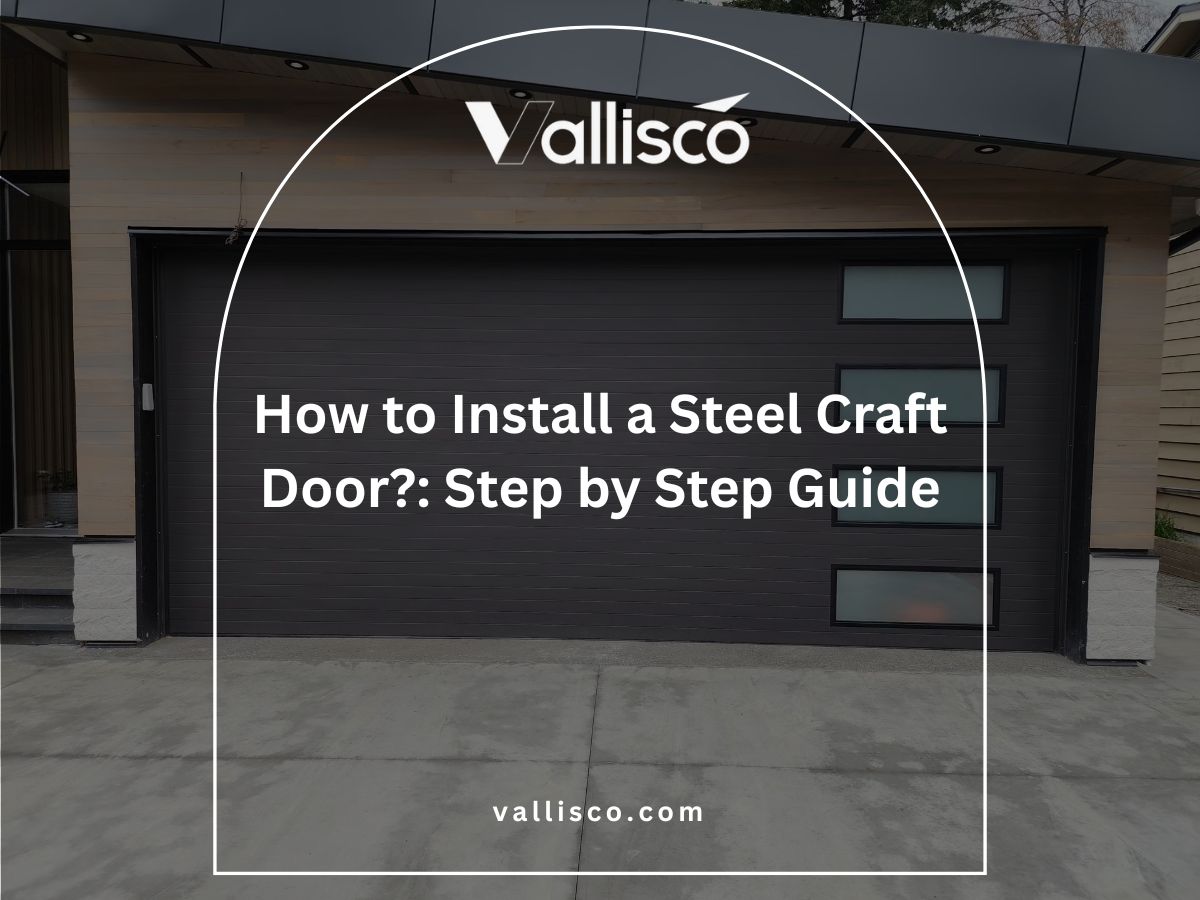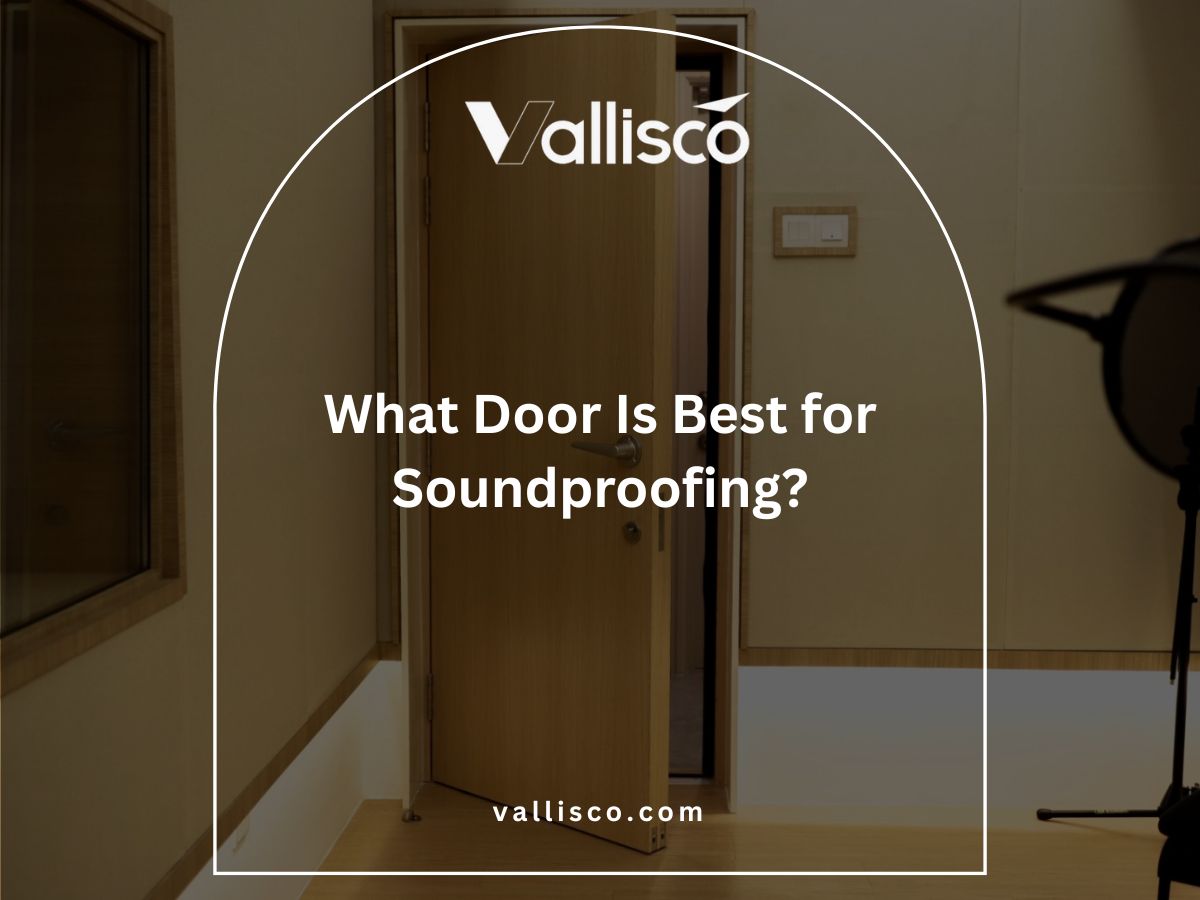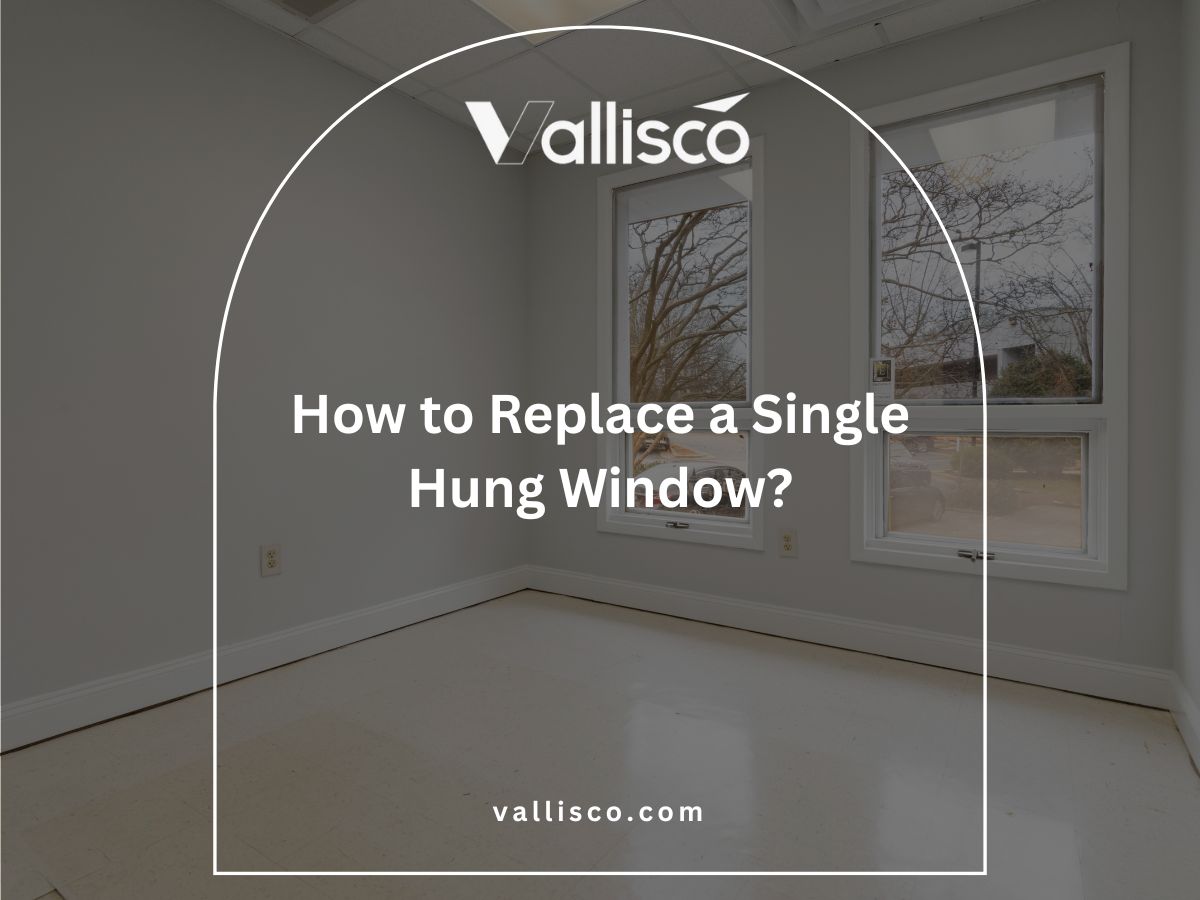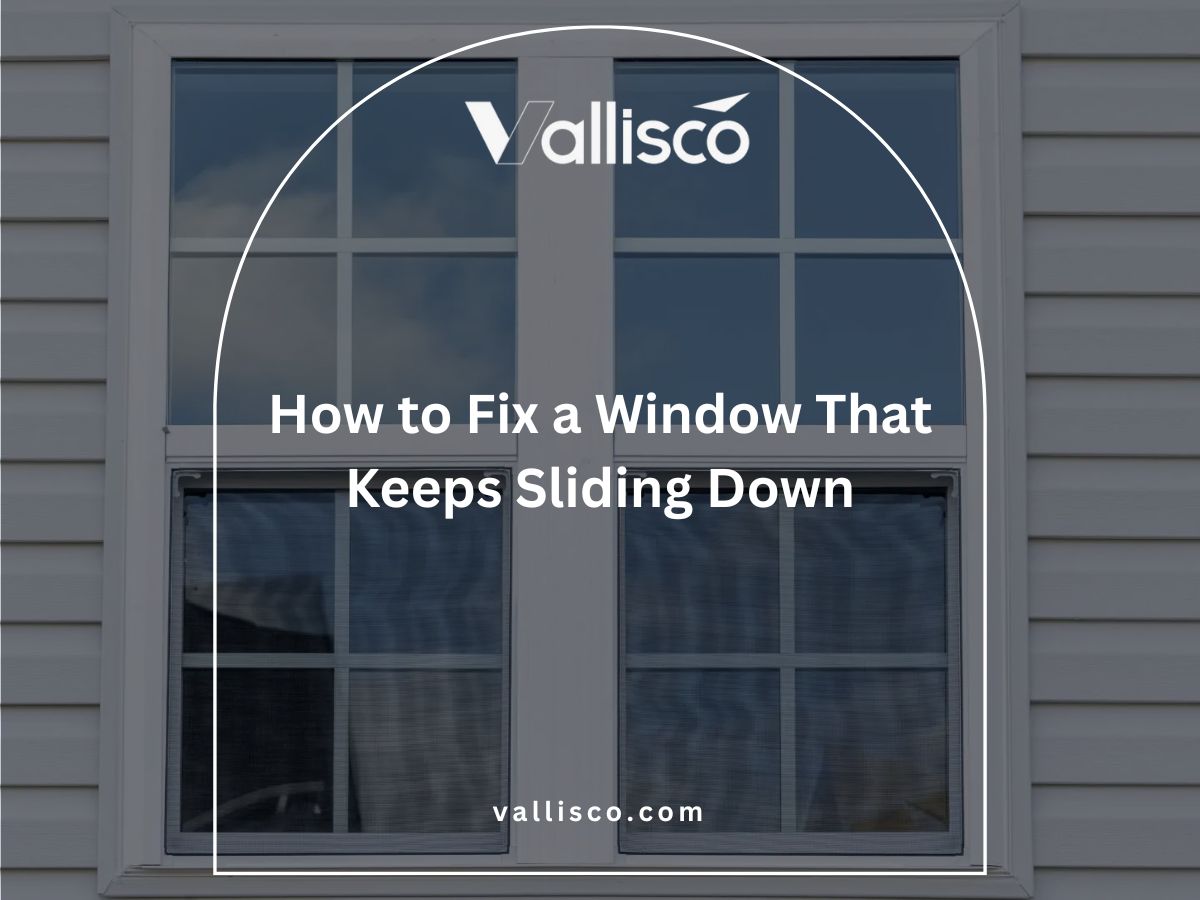I once had a hotel client who ordered garage doors for their loading area. A month later, they asked us to come replace them with bay doors. The garage doors just weren’t built for that kind of work.
That mix-up happens a lot. It’s easy to confuse the 2 if you’ve never had to install them before.
I’ve worked with hundreds of projects across villas, hotels, and small buildings. I see what works and what doesn’t in real spaces like yours.
This guide will help you understand the real difference between a bay door and a garage door. By the end, you’ll know which one fits your needs.
Let’s clear things up right away.
So let’s get down to it!
Quick Comparison Table
If you’re short on time and just want the basics, this chart sums up the key differences between bay doors and garage doors. I’ve kept it focused on the most useful details to help you make a fast, informed choice.
| Feature | Bay Door | Garage Door | Best For |
| Functionality and Operation | Handles frequent use, fast movement, suited for trucks and equipment | Works best for light use, fits cars and storage needs | Warehouses, hotel service areas, loading docks |
| Size and Structure Needs | Large openings, needs strong framing, extra clearance | Standard size, fits small spaces, low ceiling okay | Homes, villas, small B&Bs |
| Durability and Maintenance | Stronger build, long lifespan, lower long-term maintenance | Wears faster in heavy use, more cosmetic upkeep | High-traffic zones, industrial access points |
| Aesthetics | Simple and clean, not design-focused | More styles and finishes available | Guest-facing areas, residential properties |
| Installation and Cost | Higher cost and effort, but long-term value in busy areas | Cheaper and quicker to install, good for basic needs | Small projects, light-use commercial buildings |
Looking for more details before you decide? Scroll down to read full breakdowns of each section, including examples and real use cases from hotels, villas, and commercial spaces.
1. What is a Bay Door?
A bay door is a large opening used for loading and unloading goods. It’s made for busy areas like warehouses, hotels with delivery docks, greenhouses, or storage buildings. You’ll often see it where trucks back in, workers move carts in and out, or supplies arrive every day.
Bay doors are bigger than standard doors. Some are wide enough for a full-sized truck. Others are tall enough for forklifts to pass through without stopping. Most of them are made from steel or aluminum. They open by rolling up or sliding, often with the help of a motor.
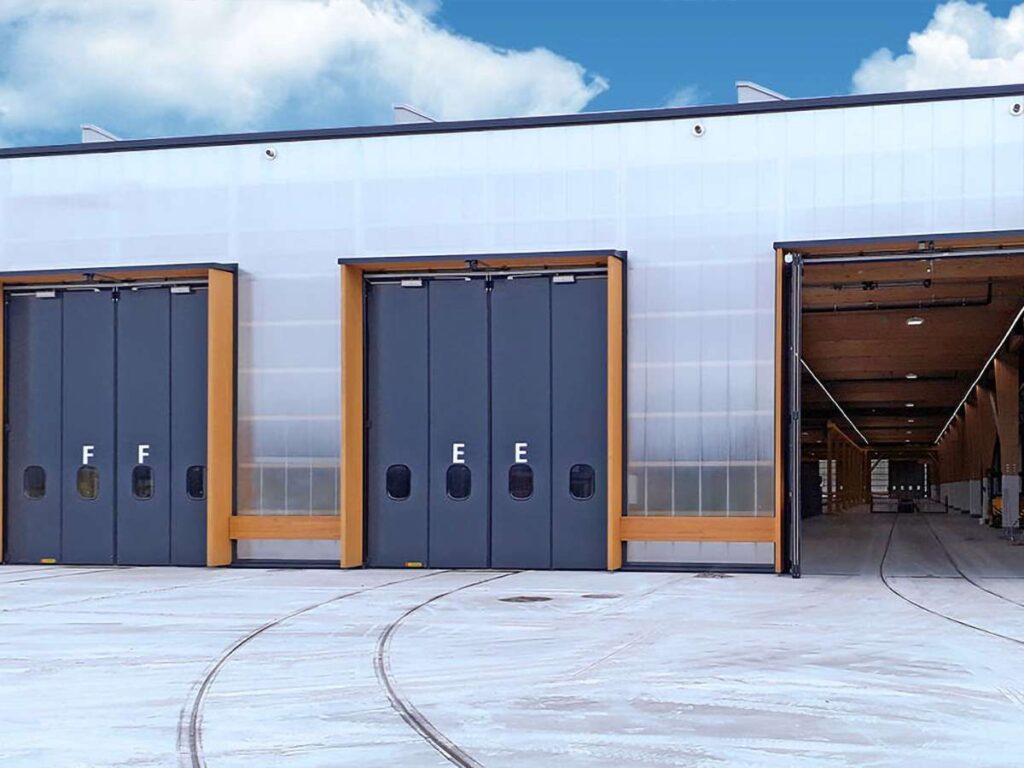
2. What is a Garage Door?
A garage door is made for smaller spaces like homes, villas, or light-use buildings. It’s the kind of door you’d use to store a car, a small van, or even tools and supplies in a private area. Most garage doors are not built for constant, heavy movement.
They usually open up by lifting or sliding, and many have a motor for easy use. The size is smaller than a bay door, and the structure is lighter. You’ll often find garage doors made of steel, wood, or a mix of materials. Some clients choose them for the look, especially in front-facing areas of villas or B&Bs.
3. Functionality and Operation Differences
This is where many people make the wrong choice. I’ve had clients ask for help after realizing their door couldn’t handle the kind of daily work they had. So before you order anything, it’s good to see how bay doors and garage doors actually function.
Let’s break it down:
How Bay Doors Work
- Built for High-Use Areas: Bay doors are made for spaces with constant activity. If you have deliveries coming in and out all day, a bay door can keep up without wearing out fast.
- Motorized or Manual Options: Most bay doors come with motorized systems. But they can also be opened by hand if needed, depending on the setup and space.
- Faster Opening Speeds: These doors open quickly to help reduce wait times for vehicles and staff. That’s useful in places like loading docks or storage areas.
- Handles Heavy Loads: Bay doors are strong enough to take hits from carts, forklifts, or cargo. You don’t need to worry about dents from daily use.
- Used With Loading Bays and Dock Seals: Many setups include dock levelers and bumpers. This helps trucks park flush against the door for faster loading.
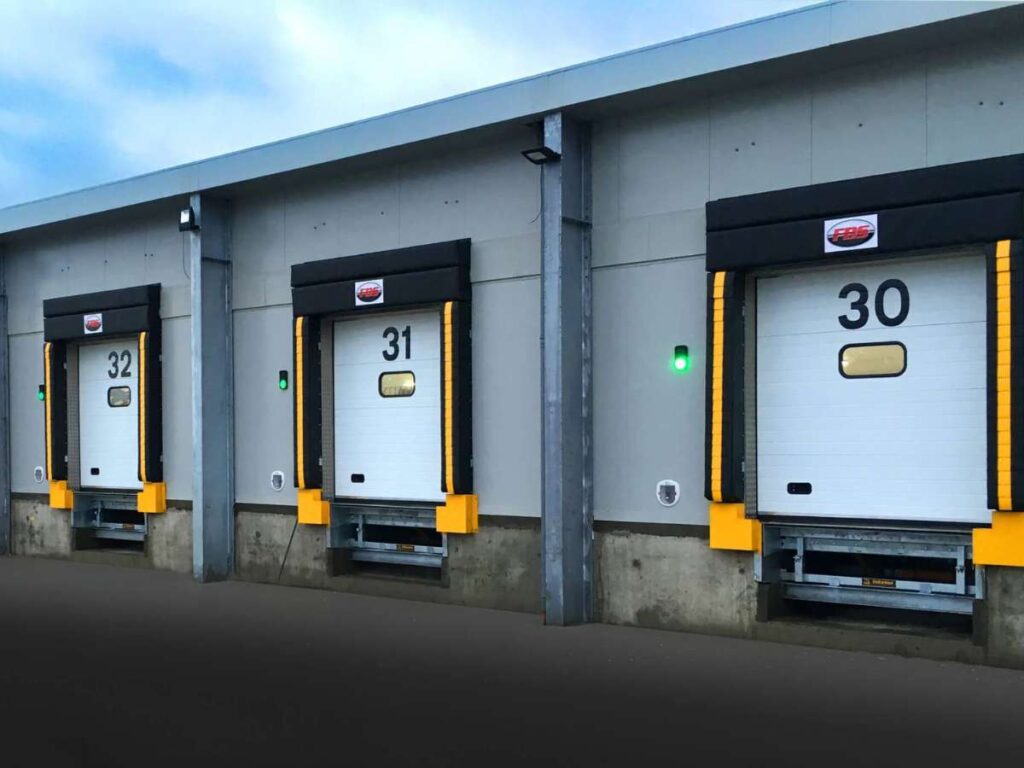
How Garage Doors Fit Light-Duty Use
- Good for Low-Traffic Areas: Garage doors work best in homes, villas, or quiet parts of a hotel where there’s less movement.
- Basic Motor Systems: Most garage doors are powered with a small motor and remote control. They’re easy to use but not built for speed or nonstop use.
- Lighter Materials: These doors aren’t made to take heavy knocks or constant traffic. That’s fine if you’re using them a few times a day.
- Focus on Quiet and Smooth Use: Many garage doors are made to open quietly and slowly. That’s ideal for residential or front-facing areas.
- Less Support Equipment Needed: Garage doors usually don’t need dock equipment or extra framing. That keeps things simple and works for small buildings.
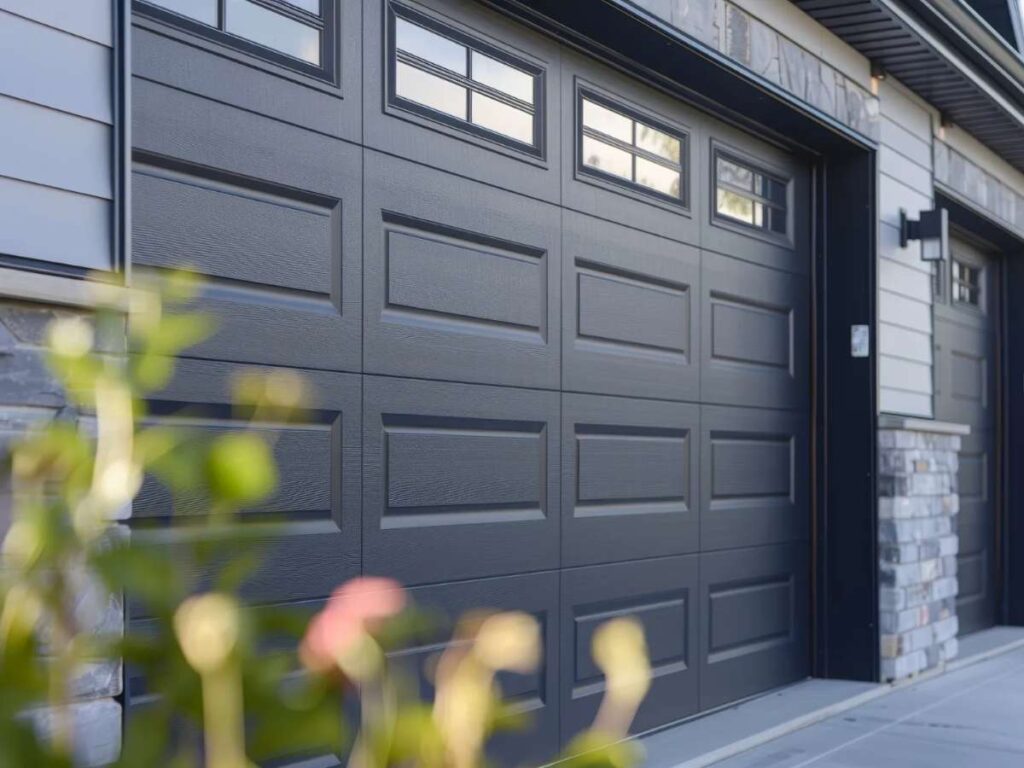
Bottom Line
If your space is busy and your team moves goods often, bay doors will do the job. If you’re just storing a car or using the door once or twice a day, garage doors are fine. It all comes down to how your door will be used not just how it looks.
4. Size and Structural Requirements
Choosing the wrong size door, or not planning for the right space, can set your project back weeks. I’ve seen hotel and villa projects get delayed just because the opening was too small or the walls couldn’t support the door.
So before you make a decision, take a look at what each type of door needs:
Bay Door
- Wider and Taller Than Standard Openings: Bay doors are often made for trucks, equipment, or large item access. Openings usually range from 3 to 6 meters wide and even taller in height.
- Needs Strong Wall Support: Because of the size and weight, the wall structure must be reinforced. That’s especially important if you’re installing a motor or roll-up system.
- Works With Concrete or Steel Frames: Most bay doors are installed into buildings with solid concrete or steel structures. These materials help carry the door’s weight safely.
- Space Above the Opening: Bay doors need overhead room for rolling or folding panels. If your building has a low ceiling, you may need a special system or redesign.
- Clearance for Vehicle Access: You’ll also need space outside the door for trucks to back in. Some sites forget this and run into problems during delivery.
Garage Door
- Standard Size for Cars or Vans: Garage doors are usually around 2.5 to 3 meters wide. They fit one or two vehicles at a time.
- Works on Brick or Wood Walls: These doors are lighter, so they don’t need as much structural support. They’re common in houses, villas, and small outbuildings.
- Less Overhead Clearance Needed: Many garage doors are built with lower ceilings in mind. They can still open smoothly even in tight spaces.
- Limited Vehicle Access Space: Because the door is smaller, you won’t be backing in trucks or large pallets. That’s fine if you only use it for private storage or light delivery.
- Can Be Installed Into Existing Openings: In many cases, garage doors can replace an old door without changing the frame. That makes it easier for them to retrofit.
Bottom Line
Bay doors need more space, stronger framing, and better planning. Garage doors are simpler and fit into lighter structures. If your building handles large vehicles or cargo, bay doors make sense. For smaller setups, garage doors keep things easy.
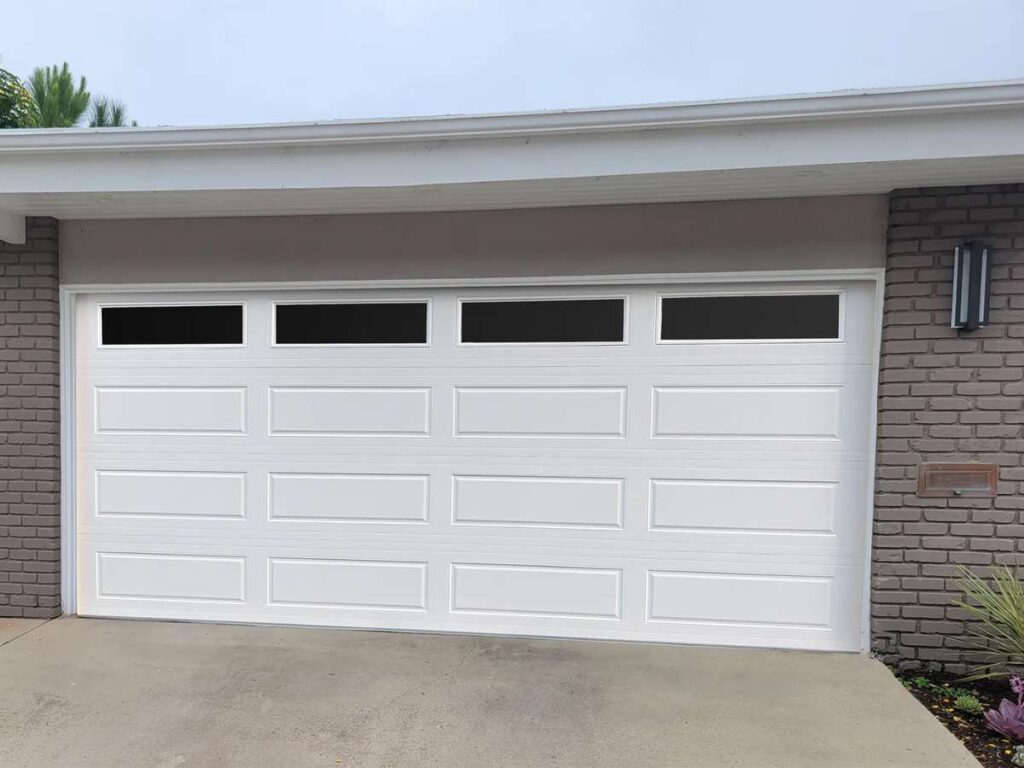
5. Durability and Maintenance
If you’re running a hotel, greenhouse, or warehouse, the last thing you want is a door that breaks down often. I’ve had clients call after just a year of use because the wrong type of door couldn’t hold up. Durability isn’t just about materials, it’s about how the door is used every day.
Here’s what you should know about how bay and garage doors perform over time:
Bay Door
- Made With Industrial-Grade Materials: Bay doors are usually made from strong steel or aluminum. They’re designed to take hits from carts, forklifts, and other heavy use without bending or cracking.
- Holds Up Against Weather and Moisture: Many bay doors are installed in open or semi-covered areas. They’re sealed and treated to deal with rain, heat, or dust without rusting fast. That’s useful if your building is in a tropical or coastal area.
- Requires Regular Checks but Less Frequent Repairs: While bay doors are strong, you’ll still need to check tracks, motors, and seals from time to time. With proper checks, major breakdowns are rare. Most problems can be fixed before they get worse.
- Longer Lifespan With Proper Use: When used correctly, bay doors can last many years even under tough conditions. I’ve seen them hold up for over a decade in busy hotel service areas. That kind of long-term value matters for business owners.
Garage Door
- Made With Mixed Materials: Garage doors can be made from steel, wood, or fiberglass. They’re lighter and not meant for repeated heavy use. If used in busy settings, they may start to wear or dent sooner.
- Better for Clean, Indoor Environments: These doors do fine in clean and dry areas, like residential garages or front-of-house parking spaces. But they may not do well in places with strong sun, salt air, or high humidity. I’ve seen finishes peel or warp if not properly treated.
- May Need More Cosmetic Fixes: Since garage doors are often chosen for looks, small damage like scratches or rust becomes more noticeable. Some owners repaint or replace panels more often than they expect. It adds up over time.
- Shorter Lifespan Under Heavy Use: When used for storage only, garage doors can last for years. But if you’re opening and closing them multiple times a day, the motor or springs may wear out fast.
Bottom Line
Bay doors are built for hard work and can take a beating. Garage doors are better for light, clean spaces and may need more attention if used often. If you expect your door to be busy every day, it’s worth investing in something that can handle it long term.
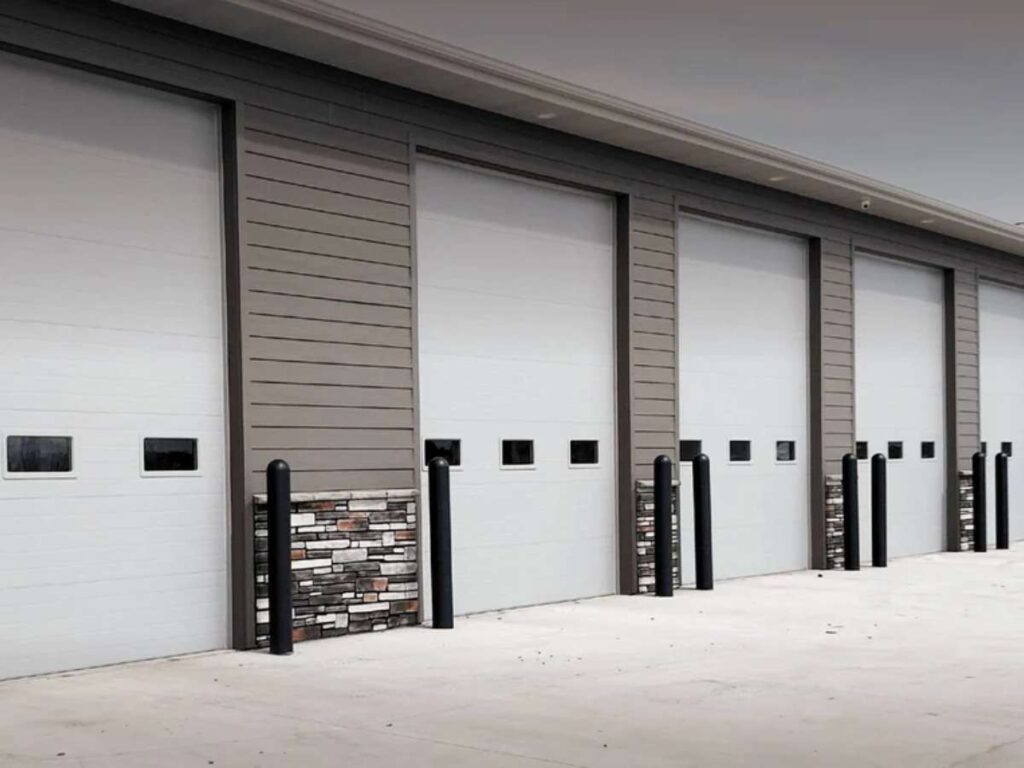
6. Aesthetics
Looks may not be the first thing you think about, but they still matter, especially if your door is visible to guests or customers. I’ve had hotel owners ask for something strong, but still presentable. You’ll want a balance between function and appearance.
Let’s compare how bay doors and garage doors look in real settings:
Bay Door
- Simple, Clean Appearance: Most bay doors have a plain, industrial look. They’re made to be practical, not decorative.
- Usually Found in Back Areas: You’ll often see bay doors behind buildings or at loading zones. That makes looks less of a concern for most property owners.
- Comes in Basic Colors and Finishes: Standard options include grey, white, or metal finishes. Some models can be painted, but the choices are limited.
- Focus on Durability Over Design: The surface is made to resist dents and wear, not show off design. That works well for utility areas where function matters most.
- Can Still Be Made Neat and Professional: Even if it’s not fancy, a well-installed bay door can look clean and well-kept. Vallisco, one of the manufacturers we work with, focuses on durable and work-ready door designs. Their bay doors are built for hard-use areas but still look clean and professional.
Garage Door
- More Style Options Available: Garage doors come in many colors, panels, and window designs. That gives you more freedom to match your building’s look.
- Used in Guest-Facing Areas: You’ll often find garage doors at the front of villas or near driveways. So how they look does matter in these cases.
- Offers Materials With Texture and Detail: Some doors have wood grain finishes or panel details. These small touches can make a big difference in curb appeal.
- Can Match Other Building Features: I’ve seen clients match their garage doors with window frames or entry doors. That kind of design match helps the building feel complete.
- Still Needs to Meet Practical Needs: Just remember, looks can’t replace performance. Make sure the door still fits how you plan to use it.
Bottom Line
Bay doors keep things simple and clean, with a focus on utility. Garage doors offer more style, but should only be used where lighter work is expected. Think about where the door will be placed, and who will see it, before making your choice.
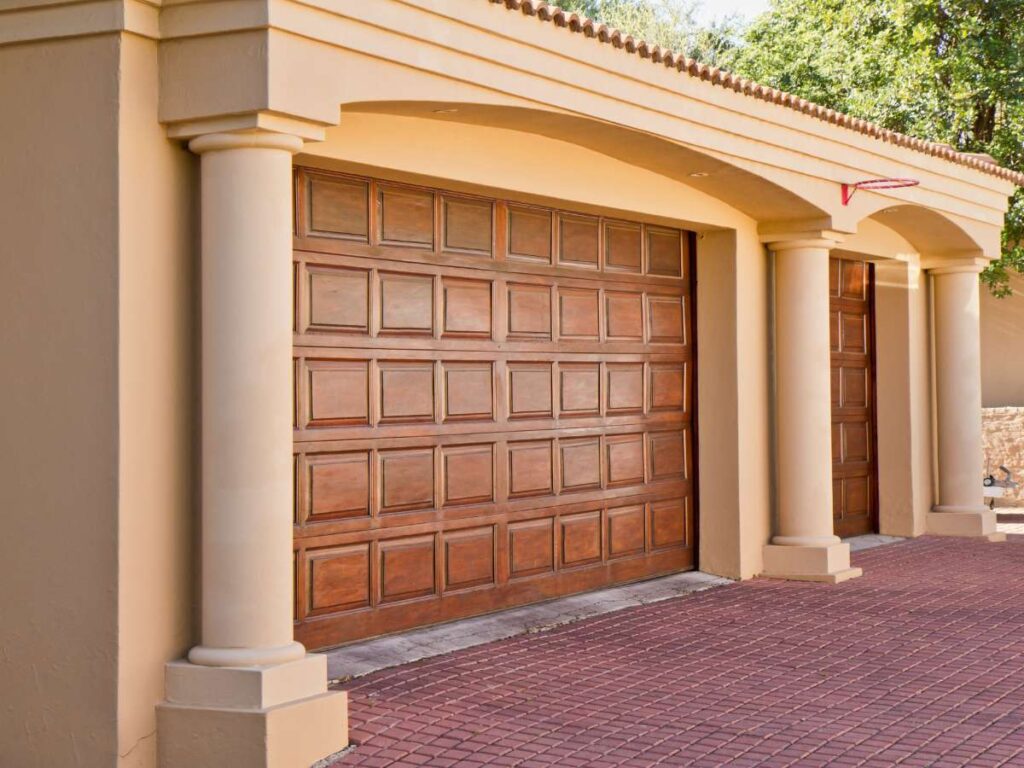
7. Installation and Cost Comparison
Some clients I’ve worked with start by asking only about the price. But after walking the site and checking structural needs, they often realize installation plays a big role too. If you plan early, you’ll avoid delays and extra costs later on.
Installation Requirements
- Bay Door: Bay doors need strong walls, beams, and extra support. Most are installed into concrete or steel structures using lifting equipment and a team of workers.
- Garage Door: Garage doors are easier to install and don’t require structural changes in most cases. They can often be mounted to wood or brick walls with basic tools.
Installation Time and Labor
- Bay Door: Installing a bay door takes more time, sometimes a full day or more, depending on the size and site. You’ll also need extra labor or machinery for lifting and fitting.
- Garage Door: Garage doors take less time to install. For small projects, installation can be done in a few hours by a small team.
Upfront Cost
- Bay Door: Bay doors cost more due to the heavy-duty build and installation needs. You’ll also spend more on motors, safety systems, and framing adjustments.
- Garage Door: Garage doors are more affordable to purchase and install. That makes them a good choice for low-use areas or budget-focused projects.
Long-Term Value
- Bay Door: Bay doors are built to last for daily, heavy use. The higher upfront cost can be worth it if you’re looking for long-term durability.
- Garage Door: Garage doors may wear faster if used too often in high-traffic areas. You might save money at first, but spend more on repairs or early replacements later.
Bottom Line
Bay doors take more time to install and cost more, but they offer long-term strength in tough settings. Garage doors are easier and cheaper, but they’re best used where traffic is low. If your space sees daily movement, go with the stronger option, it’ll pay off in the long run.
8. Factors to Consider When Choosing Between Bay and Garage Doors
Choosing the right door isn’t just about size or price. I’ve seen projects go smoothly when teams think ahead, about how the space works, how often the door opens, and what kind of vehicles or people pass through. Here are the key factors to help you decide:
Daily Use and Traffic
Think about how many times the door will open in a day. If it’s used for deliveries, large equipment, or staff movement, you need a bay door. These are built to handle constant use without slowing down. Garage doors are better for low-traffic areas with only a few openings per day. Too much use can wear out a garage door faster than you expect.
Size of Opening
Check the width and height you actually need. Bay doors give you more space for trucks, pallets, or tall carts. Garage doors are smaller, usually just enough for cars or storage. If you need extra clearance, bay doors are the better fit. Measure your opening before you order, guessing leads to mistakes.
Building Structure
Some buildings can’t support the weight of a bay door without extra work. Bay doors often need steel or concrete support and space for the motor and track. Garage doors are lighter and easier to fit into wood or brick walls.
I’ve seen many older villas go with garage doors just because it avoids structural changes. Vallisco makes both bay and garage doors designed to match different structural needs, which helps when working with limited space or existing buildings.
Budget and Long-Term Use
Garage doors are cheaper up front and easier to install. But if your space is active, they may need more repairs or a full replacement sooner. Bay doors cost more, but they’re made to last in busy areas.
Think about what makes more sense long-term, especially if you plan to use the door daily. Sometimes, paying more now saves you more later.
Conclusion
That hotel client I mentioned at the start? After switching to bay doors, their loading zone ran smoother, and they haven’t looked back since.
This guide showed you the real difference between bay and garage doors: how they work, what they cost, and where they fit best.
If you’re still unsure, go back and look at the comparison chart or read the full sections again.
Contact Vallisco today to find the right door or window system for your project. We’re here to help you choose what fits, not just what sells.
Explore More Helpful Resources
There’s more to explore! Check out our additional product selections to find exactly what you’re looking for:
Still haven’t found what you’re looking for? Don’t hesitate to contact us. We’re available around the clock to assist you.


